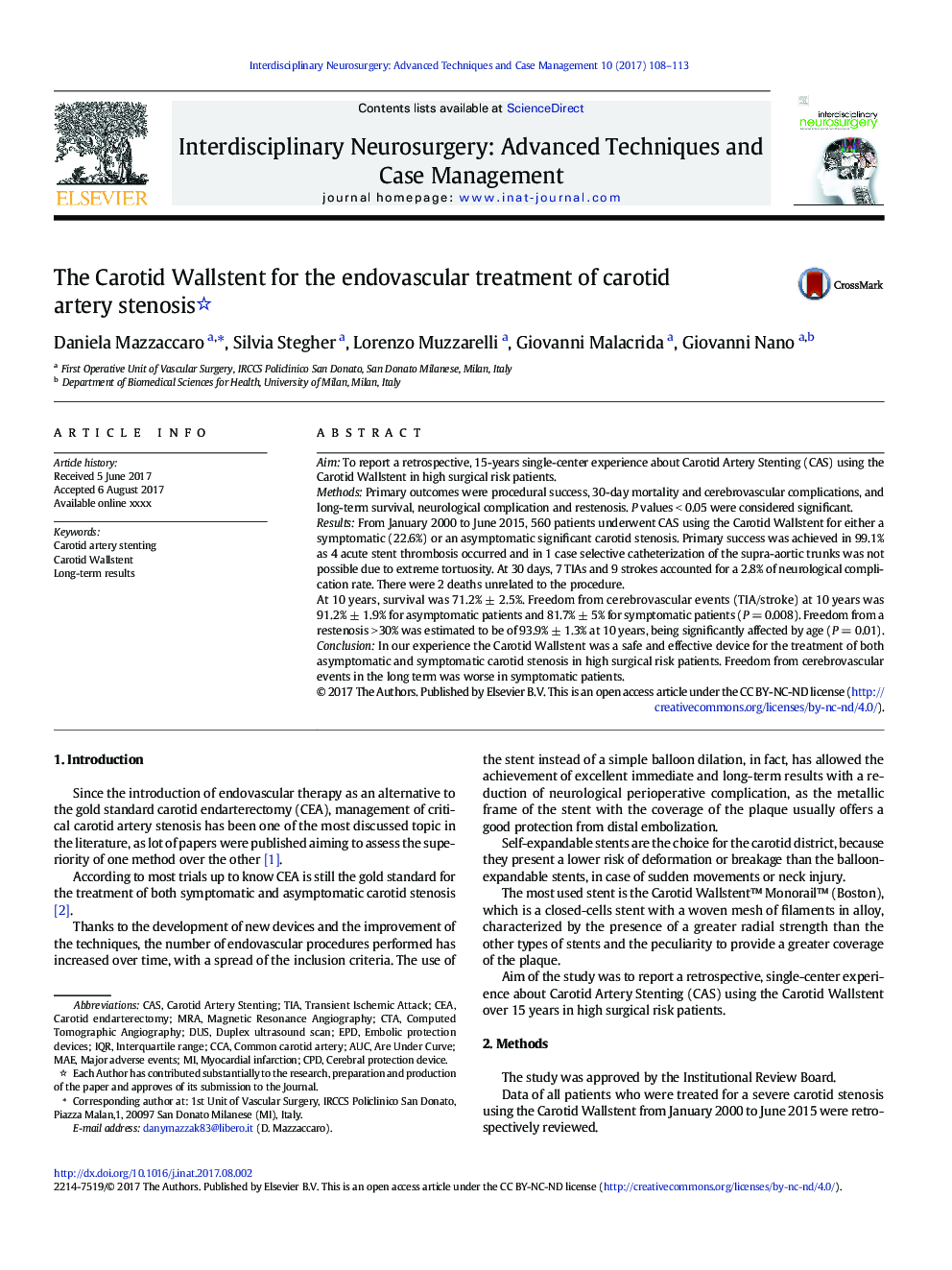| Article ID | Journal | Published Year | Pages | File Type |
|---|---|---|---|---|
| 5629417 | Interdisciplinary Neurosurgery | 2017 | 6 Pages |
â¢Self-expandable stents are the choice for the carotid district, and the most used stent is the Carotid WallstentTM MonorailTM.â¢In our monocentric, high volume experience over 15 years, the Carotid Wallstent has been employed safely even for the treatment of carotid stenosis due to “soft” plaques in patients deemed to be at high risk for carotid endarterectomy.
AimTo report a retrospective, 15-years single-center experience about Carotid Artery Stenting (CAS) using the Carotid Wallstent in high surgical risk patients.MethodsPrimary outcomes were procedural success, 30-day mortality and cerebrovascular complications, and long-term survival, neurological complication and restenosis. P values < 0.05 were considered significant.ResultsFrom January 2000 to June 2015, 560 patients underwent CAS using the Carotid Wallstent for either a symptomatic (22.6%) or an asymptomatic significant carotid stenosis. Primary success was achieved in 99.1% as 4 acute stent thrombosis occurred and in 1 case selective catheterization of the supra-aortic trunks was not possible due to extreme tortuosity. At 30 days, 7 TIAs and 9 strokes accounted for a 2.8% of neurological complication rate. There were 2 deaths unrelated to the procedure.At 10 years, survival was 71.2% ± 2.5%. Freedom from cerebrovascular events (TIA/stroke) at 10 years was 91.2% ± 1.9% for asymptomatic patients and 81.7% ± 5% for symptomatic patients (P = 0.008). Freedom from a restenosis > 30% was estimated to be of 93.9% ± 1.3% at 10 years, being significantly affected by age (P = 0.01).ConclusionIn our experience the Carotid Wallstent was a safe and effective device for the treatment of both asymptomatic and symptomatic carotid stenosis in high surgical risk patients. Freedom from cerebrovascular events in the long term was worse in symptomatic patients.
